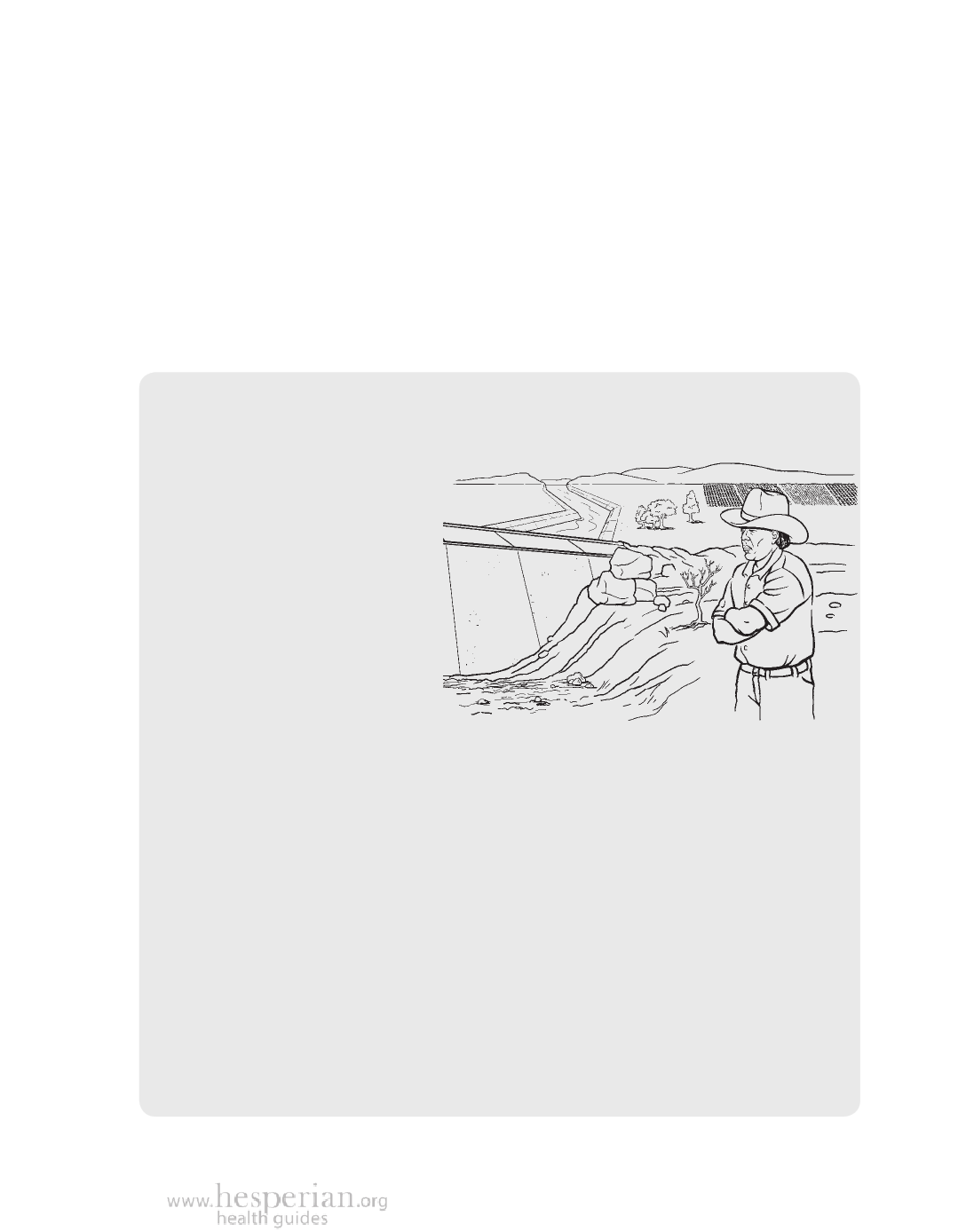
Large dams damage health 169
Large Dams Damage Health
A dam is a wall built across a river. Dams are built to block the flow of a river
and form a human-made lake called a reservoir. Water stored in reservoirs can
be used to control flooding, to provide water for irrigation and drinking, to
make electricity, or for recreation.
Dams have contributed to building modern cities and improving many lives.
But large dams, more than 15 meters tall and sometimes as tall as 250 meters,
also harm people and the land in many ways.
How a large dam made the Yaqui people sick
Many years ago the Yaqui people
lived by farming in the hot, dry
climate of northern Mexico.
Thanks to their river, the Rio
Yaqui, they had water for
farming, for drinking, and to
meet their needs all year.
This all changed when
their river was dammed. The
Mexican government agreed
that half of the water from the
dam belonged to the Yaquis.
But the Yaquis soon found that
no water arrived at their villages. The entire river had been channeled into a
giant canal to irrigate many large industrial farms growing wheat and cotton.
These large farms soon surrounded the Yaqui villages, and the Yaqui people
were left with no water for their own crops.
To grow wheat and cotton in dry desert soil requires a lot of water, chemical
fertilizers, and pesticides. Pesticides are sprayed as many as 45 times in the
months between planting and harvest. All of this poison ends up in the irrigation
canals. With their river diverted and no other source of water, the Yaquis drink
from the canals. Over the years, the polluted water made them sick.
After years of drinking contaminated water, Yaqui children were having
problems learning, thinking, growing, and playing. Many children also suffered
from severe health problems such as cancer of the blood (leukemia) and birth
defects, such as withered limbs and soft bones. These health problems are most
likely caused by drinking water and breathing air poisoned with pesticides.
The Yaqui people’s health problems began when their river was dammed.
A Community Guide to Environmental Health 2012